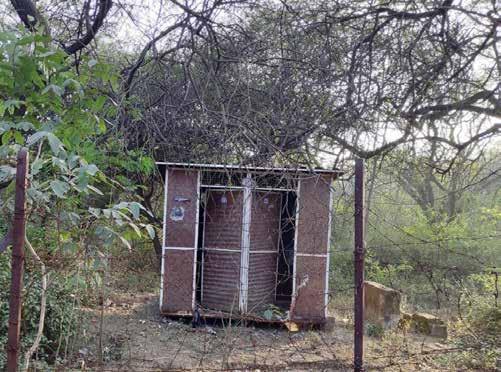
3 minute read
The state of Delhi’s Urban Forest Jahapanah City Forest
dust particles, sequester high amount of carbon, and rejuvenate water table. So, we need to have a combination of different native species. Another aspect which I would like to mention is that the trees planted along the roadsides, highways, gardens are more or less for ornamental purpose. The aesthetic appeal is also important and therefore in case of avenue plantations, it is preferred to plant species which grow upright and not horizontally like ficus. India has set ambitious ecological and environmental goals for the next decade. We are targeting a 5-trilliondollar economy and cutting down our carbon footprint simultaneously. Mitigating economy and ecology is a big task at hand for the government. In his opinion, Mehra believes that urban areas, which are hubs of economic activity, must incorporate more cluster forests in them.
“There are many ways to promote green cover in urban area. The most common approach amongst them is the Cluster approach where we create city forests, parks, etc. This is basically creating a few lungs in the city in the form of tree clusters and these are scattered citywide as per the need to reduce air pollution, recharge water table, sound pollution, and more. These are the ‘Urban Forests’,” he said.
Advertisement
Developing city forests is better because they not only sequester more carbon as compared to a few individual trees but also helps in rejuvenation of ground water table as well. They are also natural habitat for the local fauna, thus promoting a healthy ecosystem. The government is also of the same view towards the city forests. When the problem of air pollution was at its peak in Delhi this ovember, Prakash Javadekar had pitched his experiment in Pune of creating an urban forest that would act as “green lungs” of any growing city. “The Centre had identified 200 cities and told the civic corporations there that we would give the money for the creation of urban forests.” For Delhi, there are already many city forests in place.
Ou r team visited Delhi’s urban forest which is open to public, the Jahanpanah City forest. The entrance of the forest is aesthetically pleasing but the condition changes as we move deeper into the forest. The upkeep of the forest starts deteriorating. Jahapanah city forest is spread in an area of 435 acres and is quite dense. However, the forest department reported to Delhi Development Authority(DDA) in its report in January in 2019 that the instances of tree felling and deforestation are common as people extract wood regularly in the winter season.
There were claims and counter claims between the DDA and the civil contractor who is in-charge of the upkeep of the forest. The DDA official told Urban Update that the trees are not marked in the area. The marking of trees is essential to keep track of them. The civil contractor, however, told us that the trees over the age of six have been marked. We did not see any markings on the trees during our visit. Further, the DDA said that there are no preventive measures for tree felling in the area, while the contractor said proper criminal cases are lodged against the persons who are caught cutting trees.
The other thing was the lack of public facilities as the number of toilets were inadequate in the area and a few toilets were neither functional nor maintained properly. Hence, open defecation in the area is rampant, the report also mentions the fact. While the DDA official says the civil contractor is responsible for the upkeep of toilets and the dustbins, the contractor points towards the authority for the same.
Open littering of garbage was a common sight during our visit as the city forest serves as a pathway for people living in the nearby colonies during the day. Most of these issues were reported by the state forest department of Delhi last year in January to the DDA but no concrete actions were taken.










